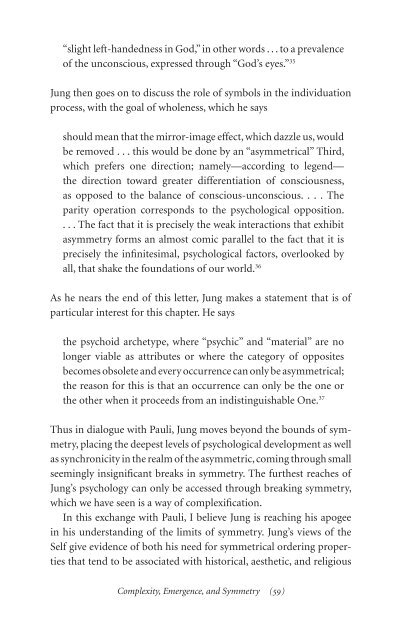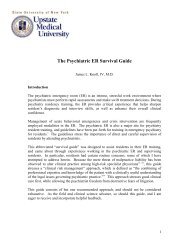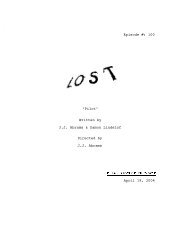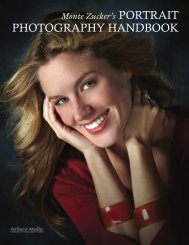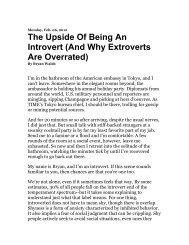Synchronicity Cambray
Synchronicity Cambray
Synchronicity Cambray
You also want an ePaper? Increase the reach of your titles
YUMPU automatically turns print PDFs into web optimized ePapers that Google loves.
“slight left-handedness in God,” in other words . . . to a prevalence<br />
of the unconscious, expressed through “God’s eyes.” 35<br />
Jung then goes on to discuss the role of symbols in the individuation<br />
process, with the goal of wholeness, which he says<br />
should mean that the mirror-image effect, which dazzle us, would<br />
be removed . . . this would be done by an “asymmetrical” Third,<br />
which prefers one direction; namely—according to legend—<br />
the direction toward greater differentiation of consciousness,<br />
as opposed to the balance of conscious-unconscious. . . . The<br />
parity operation corresponds to the psychological opposition.<br />
. . . The fact that it is precisely the weak interactions that exhibit<br />
asymmetry forms an almost comic parallel to the fact that it is<br />
precisely the infinitesimal, psychological factors, overlooked by<br />
all, that shake the foundations of our world. 36<br />
As he nears the end of this letter, Jung makes a statement that is of<br />
particular interest for this chapter. He says<br />
the psychoid archetype, where “psychic” and “material” are no<br />
longer viable as attributes or where the category of opposites<br />
becomes obsolete and every occurrence can only be asymmetrical;<br />
the reason for this is that an occurrence can only be the one or<br />
the other when it proceeds from an indistinguishable One. 37<br />
Thus in dialogue with Pauli, Jung moves beyond the bounds of symmetry,<br />
placing the deepest levels of psychological development as well<br />
as synchronicity in the realm of the asymmetric, coming through small<br />
seemingly insignificant breaks in symmetry. The furthest reaches of<br />
Jung’s psychology can only be accessed through breaking symmetry,<br />
which we have seen is a way of complexification.<br />
In this exchange with Pauli, I believe Jung is reaching his apogee<br />
in his understanding of the limits of symmetry. Jung’s views of the<br />
Self give evidence of both his need for symmetrical ordering properties<br />
that tend to be associated with historical, aesthetic, and religious<br />
Complexity, Emergence, and Symmetry ( 59 )


